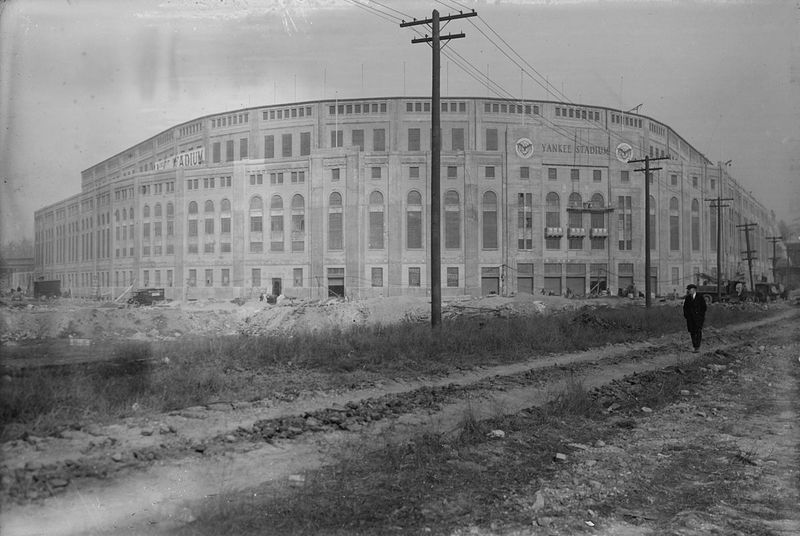5. Yankee Stadium, the Bronx
 Original Yankee Stadium exterior. Image via Library of Congress Prints and Photographs Division
Original Yankee Stadium exterior. Image via Library of Congress Prints and Photographs Division
For a brief tenure from 1913 to 1923, the New York Yankees called the Polo Grounds home as well, before the owner of the Giant grew angry at the popularity of the Yankees and evicted them from the stadium. The team moved north to the Bronx and built the famous Yankee Stadium.
Yankee Stadium was officially opened in 1923, and was paid for completely by the team’s owner, Jacob Ruppert. At the time of its opening, the stadium was considered one of the game’s most unique stadiums due to its odd dimensions and character. Later renovations would shorten the distance, but originally center field was in fact deeper than that of Polo Grounds, reaching 487 feet from home plate to center field, giving it the nickname of “Death Valley”.
The original Yankee Stadium is widely considered one of the most memorable venues, not just in baseball but in New York City and around the world. “The House That Ruth Built” held some of the most historic moments in baseball history until its demolition in 2009.
The early years of the country’s first three tiered sports stadium were critical in the sport’s surge in popularity. Masses of crowds filled the initial 58,000 seats to see names like Babe Ruth and Lou Gehrig in hopes of seeing the then rare home run. These power hitters helped usher in the new “live ball era” of baseball and with it, drew in more and more people to the games.
Due to the increasing popularity and higher demand for seating, Yankee Stadium underwent a series of expansions and renovations throughout its life. Within the first 20 years, the three deck grandstand was extended into left and right field, increasing the seating capacity to roughly 80,000 and the famous “Monument Park” was first erected in 1932. The stadium would undergo minor renovations until the 70s, including the installation of new lights and a scoreboard, but it wasn’t until 1973 that the park close entirely for a massive renovation that included removing and replicating the iconic copper facade along the outfield scoreboard.
Fun fact: The ballpark wasn’t home to just one team called the New York Yankees. From 1946-1949, a football team by the same name played their seasons at Yankee Stadium as a part of the All-America Football Conference and played their last game in Yankee Stadium on December 4, 1949.
In 2006, construction on the new Yankee Stadium began across the street from the original in order to generate more revenue and for the baseball team to update their home. The new stadium kept the same name and opened in 2009 in time for opening day, ushering in a new era of New York City baseball with a World Series win for the Yankees in the new stadium.
Following the demolition of the original stadium in 2009, parts of the stadium including seats, dirt, and grass were auctioned off to fans. Today, Monument Park can be seen in the new Yankee Stadium, as it was moved across the street, and a park called Heritage Field was constructed on the site of the old stadium in remembrance.





